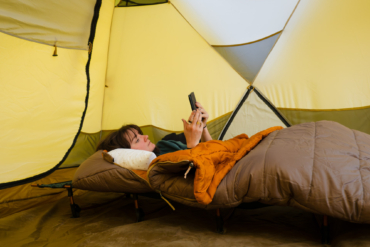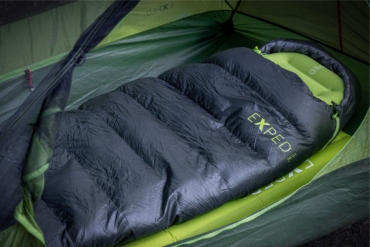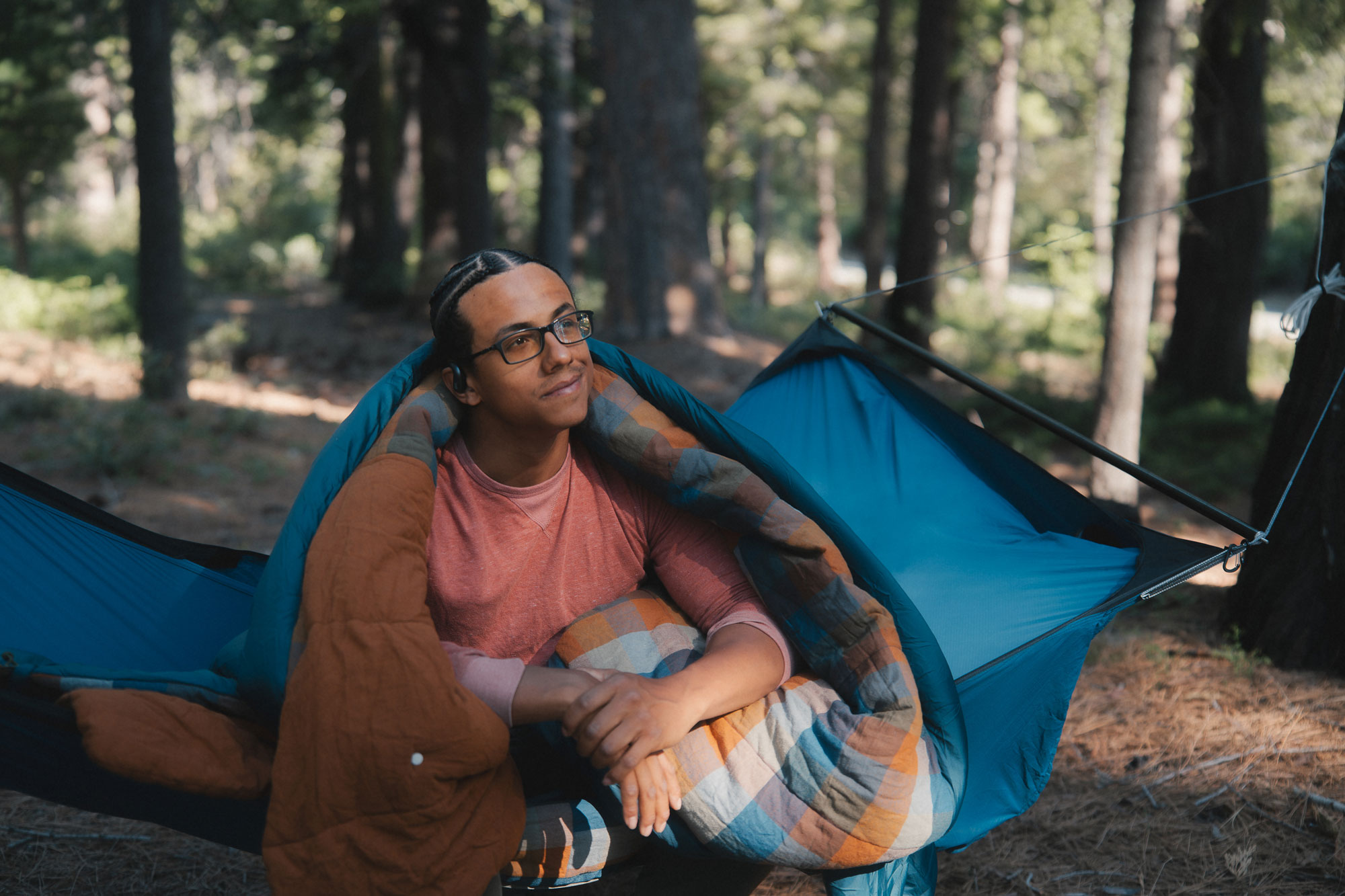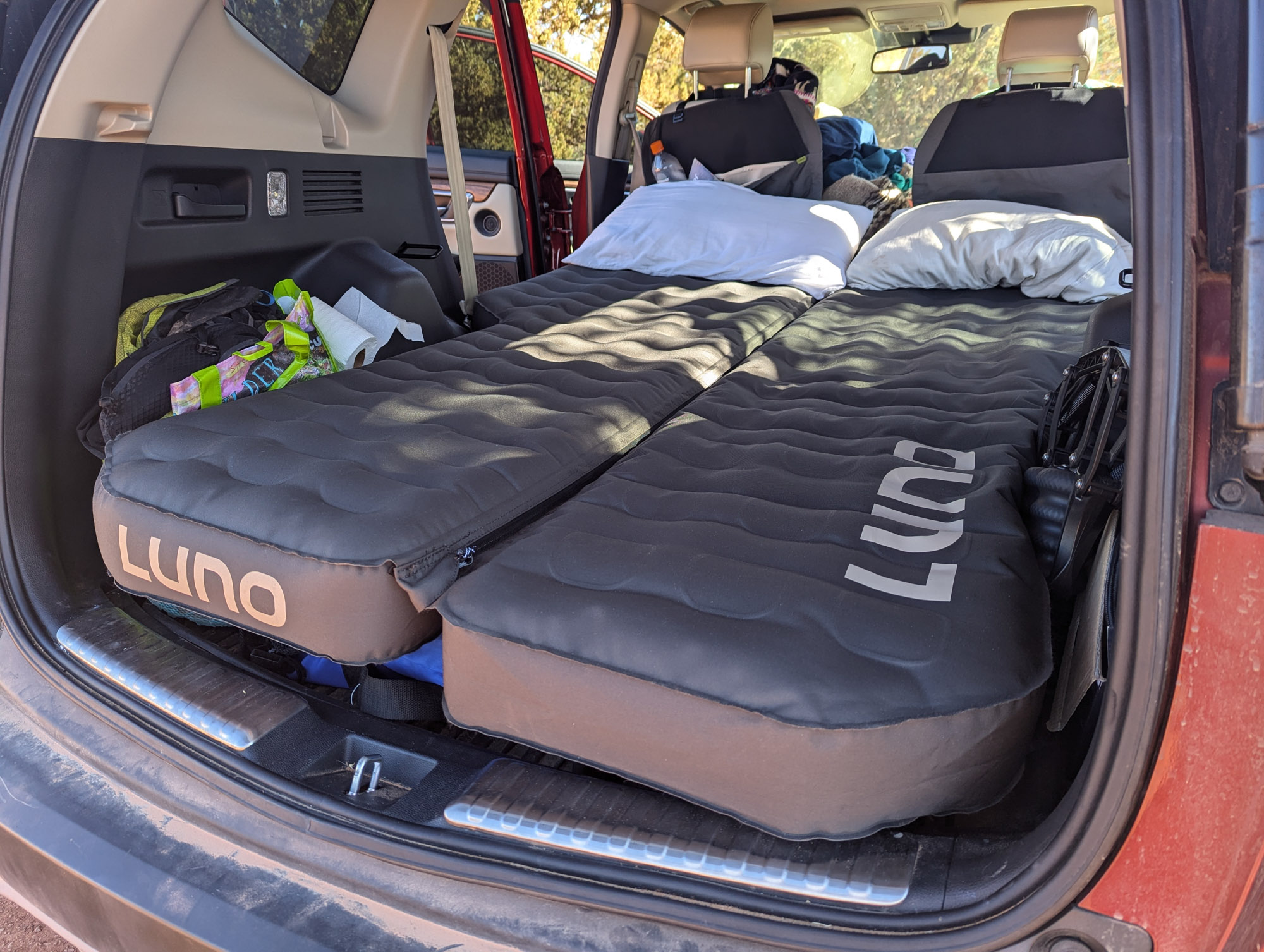
Rainier’s shadow has long cast inspiration on Eddie Bauer’s headquarters. What first started with the Whittaker brothers has been passed down to the current heirs of the mountain throne at Rainier Mountaineering Inc., who continue to payout guide-driven user experience to the design room in Bellevue.
This year, the team unveiled the culmination of three years’ work with the Airbender 20?, integrating the pad and bag into a singular 20-degree sleep system.
Before we go further, I should reveal the elephant in the bag. The Airbender comes at a staggering price: $800. It’s the cost of coordinating two factories with two calendars under the guise of patent pending politics. In short, a lot of people touched the development of the bag and the burden of cost is reflected in the price.
Whether the marriage of bag and pad is overinflated or pure genius is in the wallet of the consumer. But sooner or later it was bound to happen. And Eddie swung for the fences on this one. So let’s take a look at where this first-to-market landed. —Steve Graepel

The Gear: Eddie Bauer/First Ascent Airbender 20? Sleeping Bag
Price: $799; $849 (L)
Available: Now
Where To Test It: The slopes of Rainier, or any peak where you’ll be bedding down on the ice.
Who’s It For: Non-technical mountaineers.

Boring But Important: 15D Pertex® nylon shell, 850-Fill DownTek Down; 14.5 oz; 16.0 oz (L); Climashield HL synthetic insulation (about 80g/m2) bonded to both the top and bottom of the pad. Avg. Weight: 3lbs, 1oz, 3lbs, 5oz (L); Width/Length: 32.5” x 84”; 32.5” x 90” (L)

Sleeping Bag The top of the bag is premium quality, filled with 14.5oz (regular bag) of 850-fill DownTek down, lofting the bag 3”. DownTek ensures the bag insulates when wet, which is critical for mountaineering and other wet environments.
The baffles are intelligently positioned to both trap and move heat where you need it: vertically over the chest to disperse heat evenly over the torso…horizontally around the legs to trap heat. The bag wraps under the shoulders a bit, cuddling you as you doze off.
Near the zipper side, the top has a large internal zip pocket large enough to swallow a liter water bottle. Placing it inside keeps it from freezing and in one consistent same place, right where you left it (as opposed to rolling on the tent floor between you and your tent mate).

Integrated Pad — An insulated inflatable sleeping pad is sewn to the bottom of the bag. It’s longitudinal baffles have an 80g/m2 Climashield insulation bonded to both sides of the pad to trap air from moving. This is about 25% more insulation than you would find in, say, Patagonia’s 60g/m2 Nano Puff jacket. The baffles run the length of the pad, distributing heat from head to toe. This gives the pad about a conservative R-value of 5—entirely suitable for a below freezing bivy.

The pad has two valves at the foot of the bag. One unidirectional valve to inflate and a second bidirectional valve for quick deflation. To speed setting up camp, the inflation side couples with a clever inflation bag integrated to the top of the compression sack (provided). It works a bit like a foot pump. The sponge filled inflation bag automatically refills after you push air into the pad.
When packing it up, you will want to stuff the bag head first into the stuff sack so that you roll air out of the pad while you stuff it.

Sewn together — The pad and bag are sewn with solid construction and this is what separates the Airbender from the rest of the pack. Its well constructed and virtually seamless.
A double-sided zipper runs the right-side length of the bag and has a robust down-filled draft tube.

Made In: Taiwan
Killer! No more falling of the pad and waking up to a cold spot on your side.
Flaw: Clearly the price; an 850-fill DownTek ® bag rated 15-20? will run between $400-500 and another $100-$200 for an equivalent pad. Can you find a more cost effective pairing? Absolutely. Will the Airbender’s cost come down? Its in their game-plan.
Price aside, the side zipper lacks a tab at the top to hold the two sides together. This addition could prevent the zipper from tracking back down your backside in the middle of the night.
While the top bag has a draft tube, it’s absent on the pad side. This leaves an air gap between the bag’s hood and body.
The integrated pump found on the stuff sack seems gimmicky. I had to manually open and close the valve to keep air in the bladder to push into the pad. I gave up and blew it up by mouth, which took 7 breathes to fill it up.

First Impressions: The 20? bag paired to the 5 R-value pad may actually save a little weight. You essentially cut the bottom of the bag, which is compromised insulation when compressed by body weight. This isn’t new; quilts have successfully marketed this concept for years.
The combination is much warmer than its 20? rating, though, which is probably residual from its initial inspiration as a high-altitude bag. If it wasn’t for the lack of a pad-side draft tube, it might swing in as low as 10?. As is, it’s probably closer to 15?. Regardless, it’s a conservative 20?.
Because of the rigid footprint, the bag requires a flat surface. And unless you’re on a portaledge, its restricted to non-technical routes. Stretched around the pad, the bag has some extra internal space. On one hand, you get more legroom. On the other, you have more space to heat.
The Airbender’s compression sack gets the system down to 9” x 15” (12” if cinched tight), comparable to a medium-sized synthetic bag. This bulk takes up more real estate in your kit, requiring a larger pack, where two independent pieces could be stuffed in the crevices of your pack.

Lastly, while a 20? bag is the norm for mountaineering, an inflatable pad is not. At least not used alone without the peace of mind of a closed-cell pad. If you are climbing, you are playing with at least 30 sharp opportunities to spend a night out on a cold slab. A popped pad will probably get you through the night, but you should be prepared to fix the pad in the field.
These nuances give the bag a general mountain rather than a technical focus.
Who Should Buy It: Your wealthy friends with a champagne taste for gear on a … well … champagne budget.
Contact Brand/More Beta: Eddie Bauer Airbender 20?
— Steve Graepel is a contributor. Our “First Look” column highlights new gear arrivals at GearJunkie.com. Photos © Monopoint Media LLC





